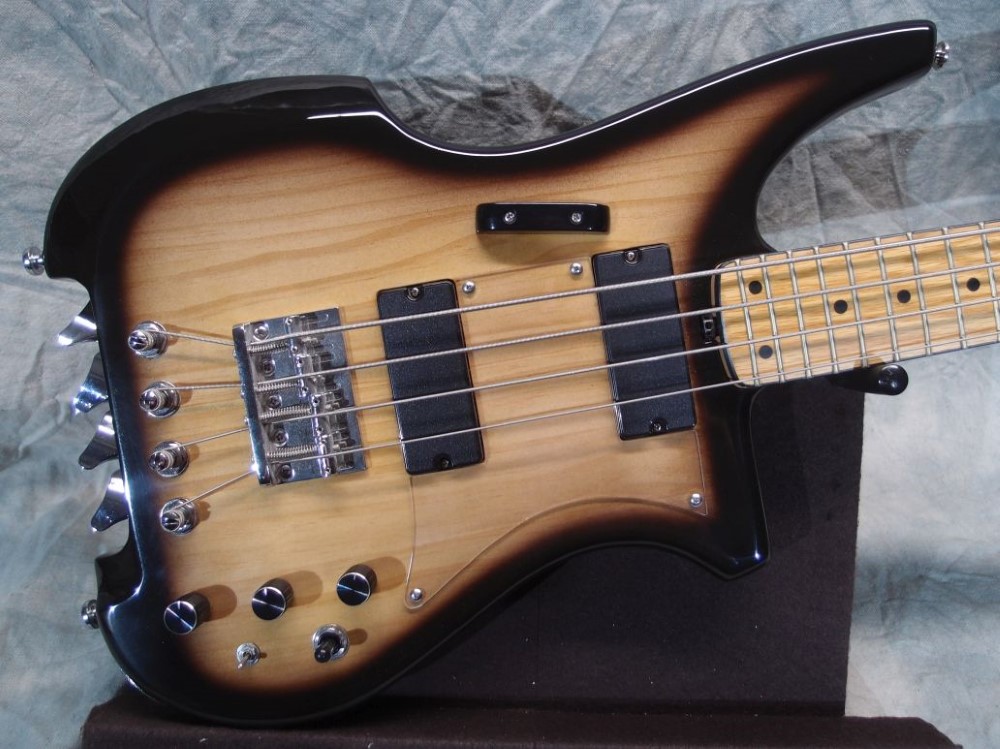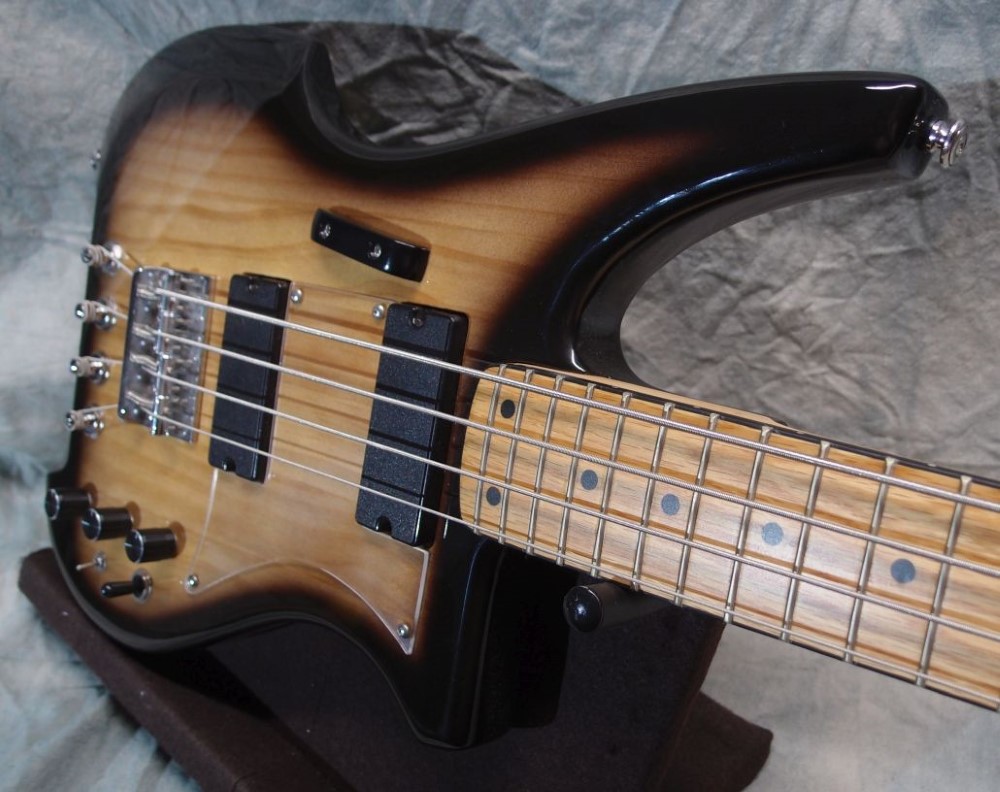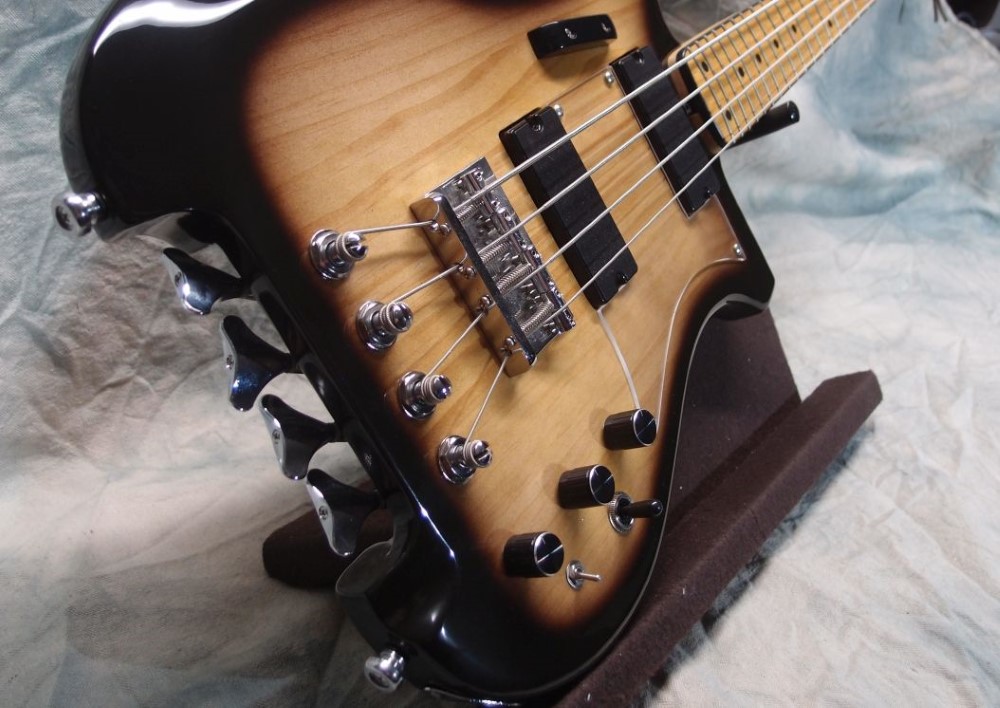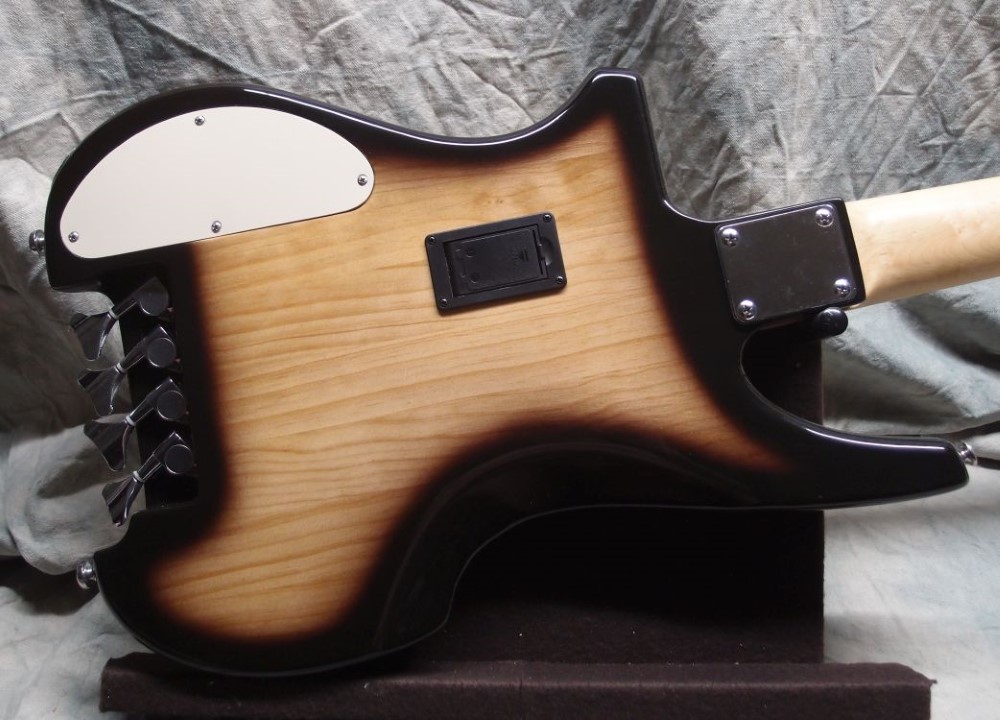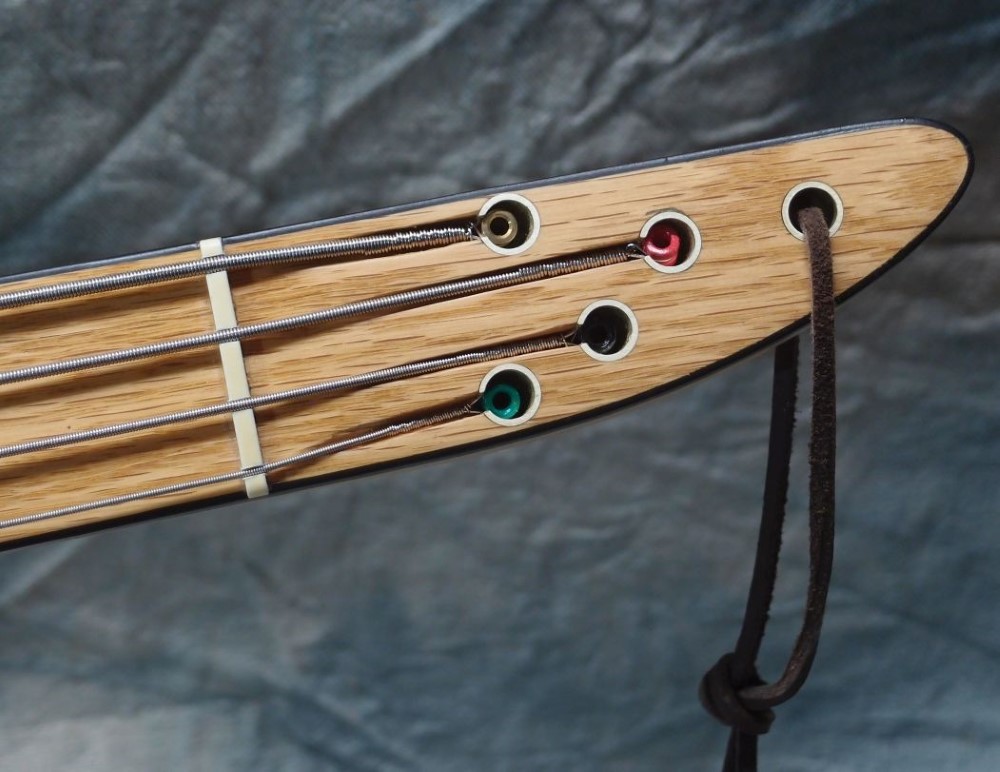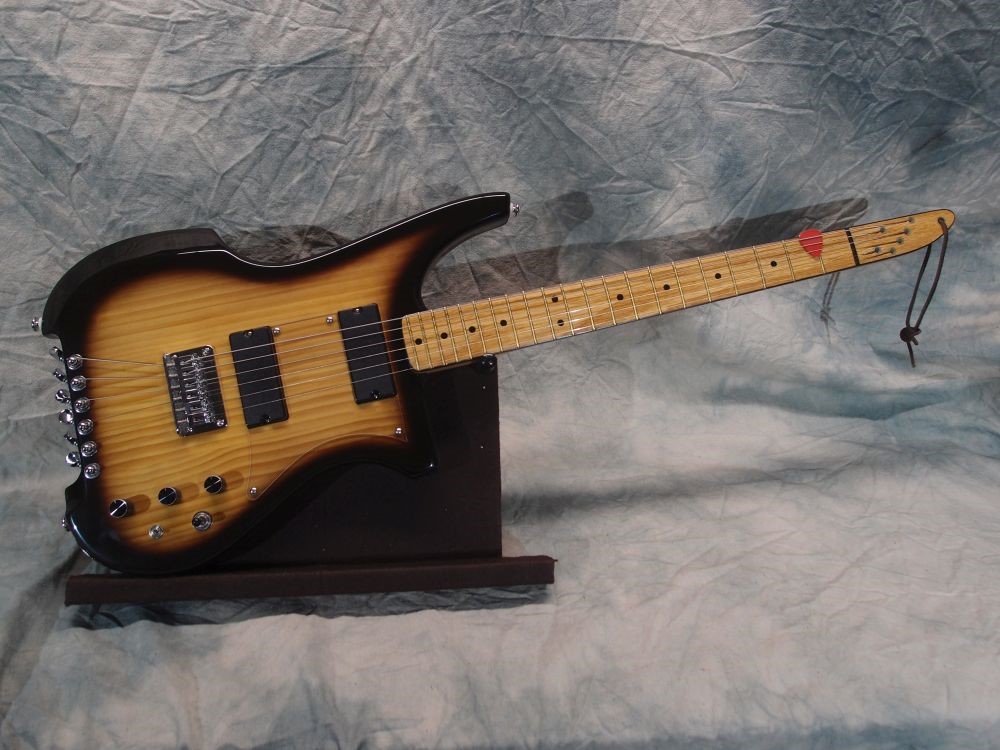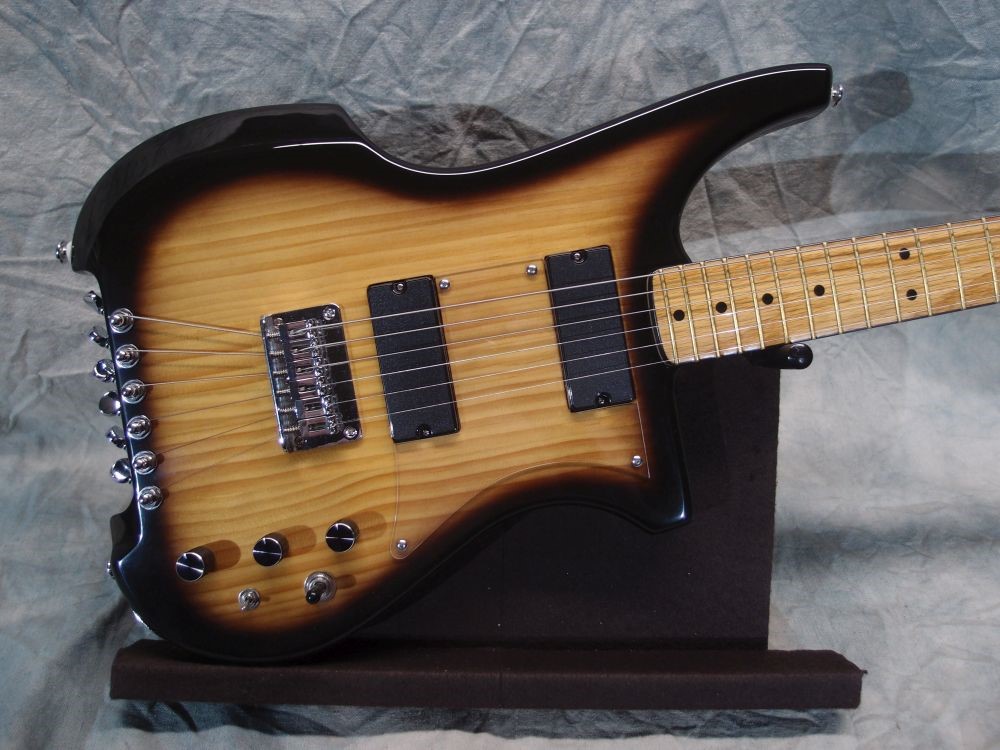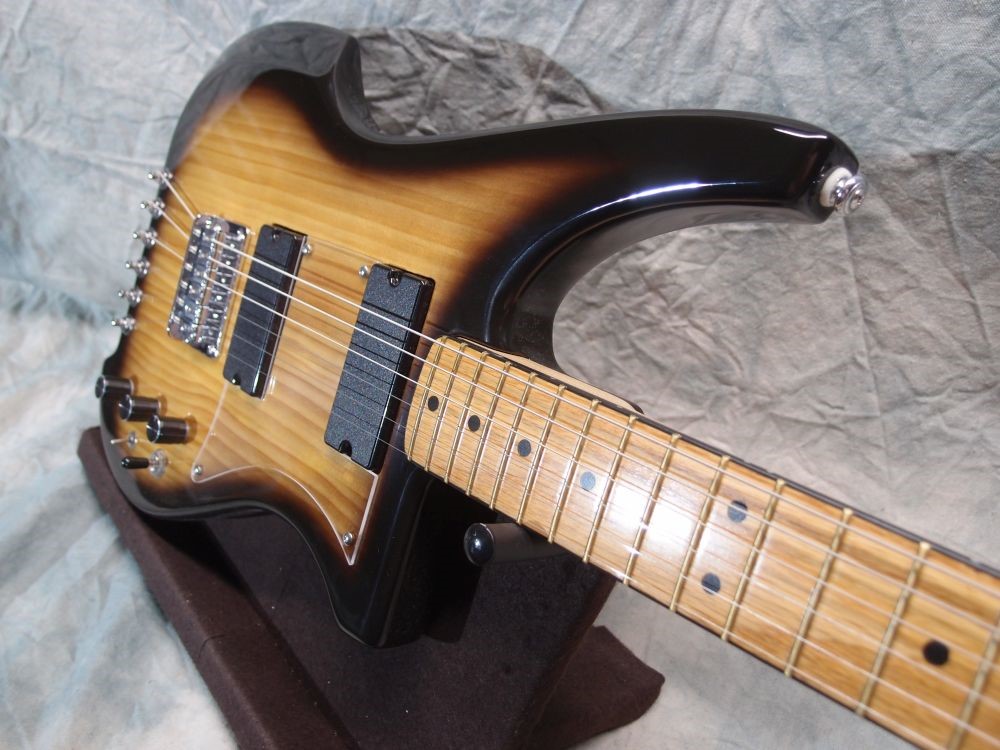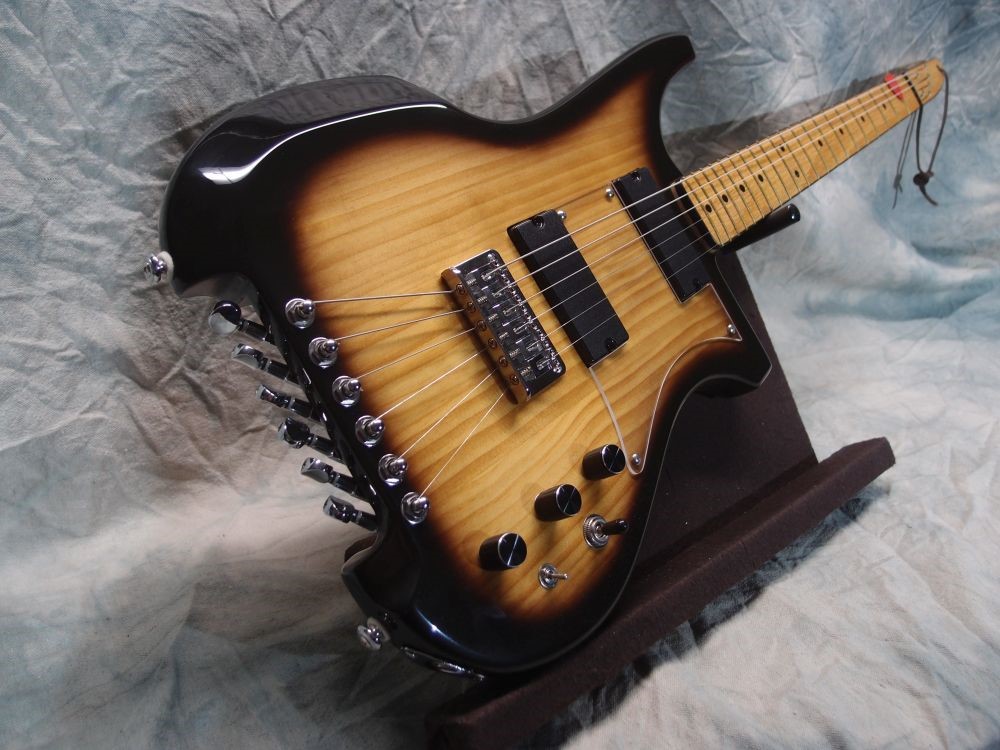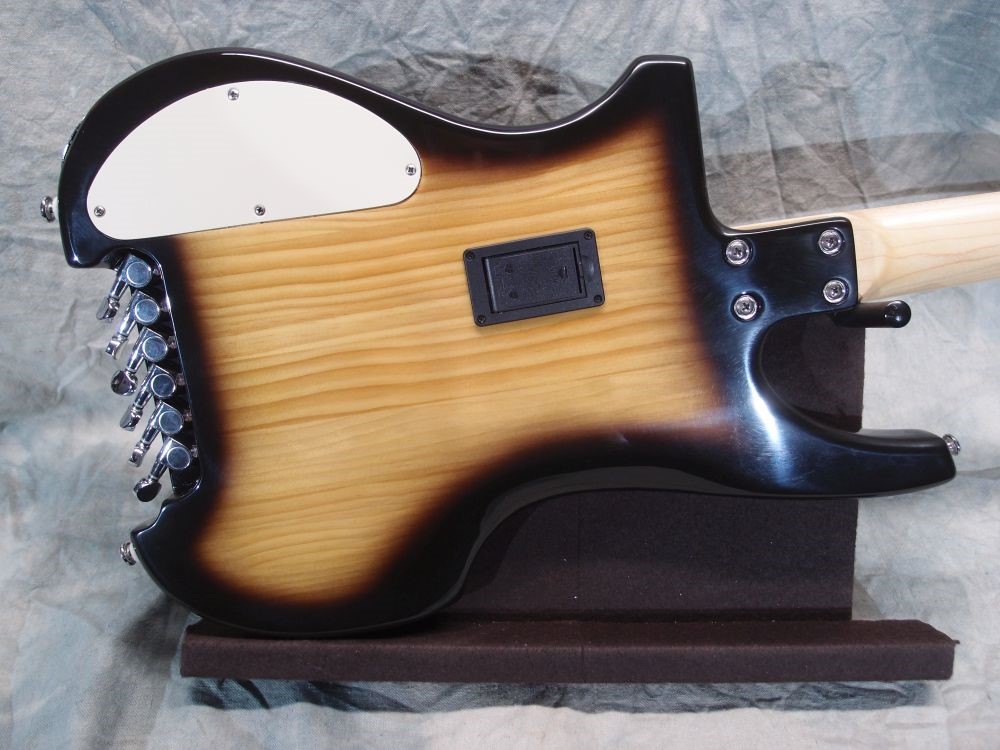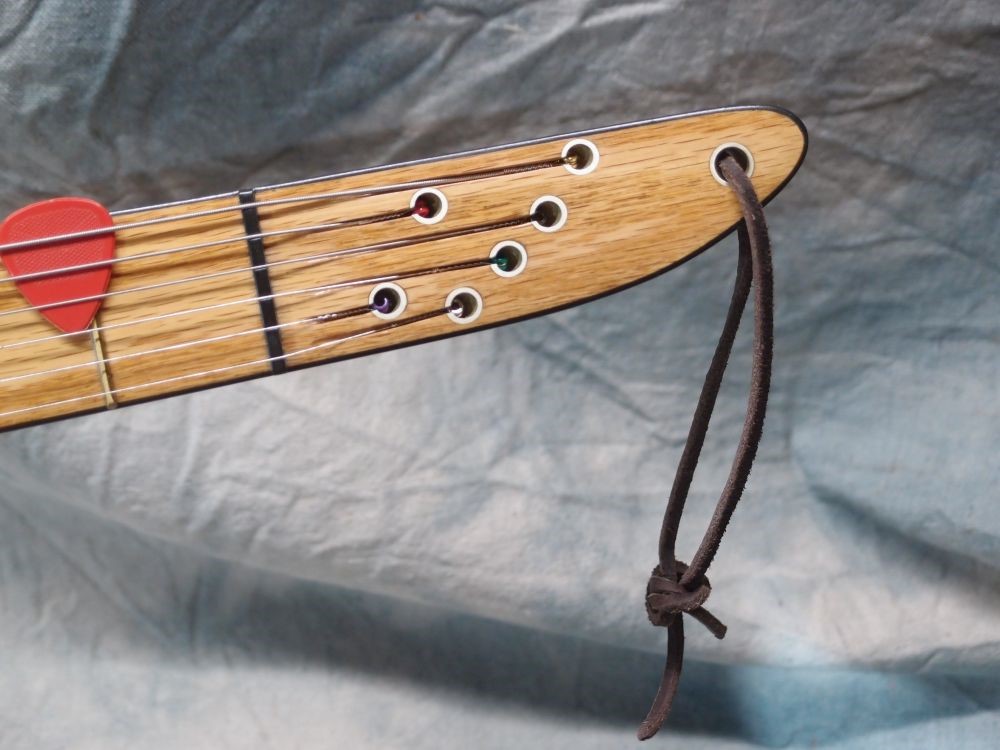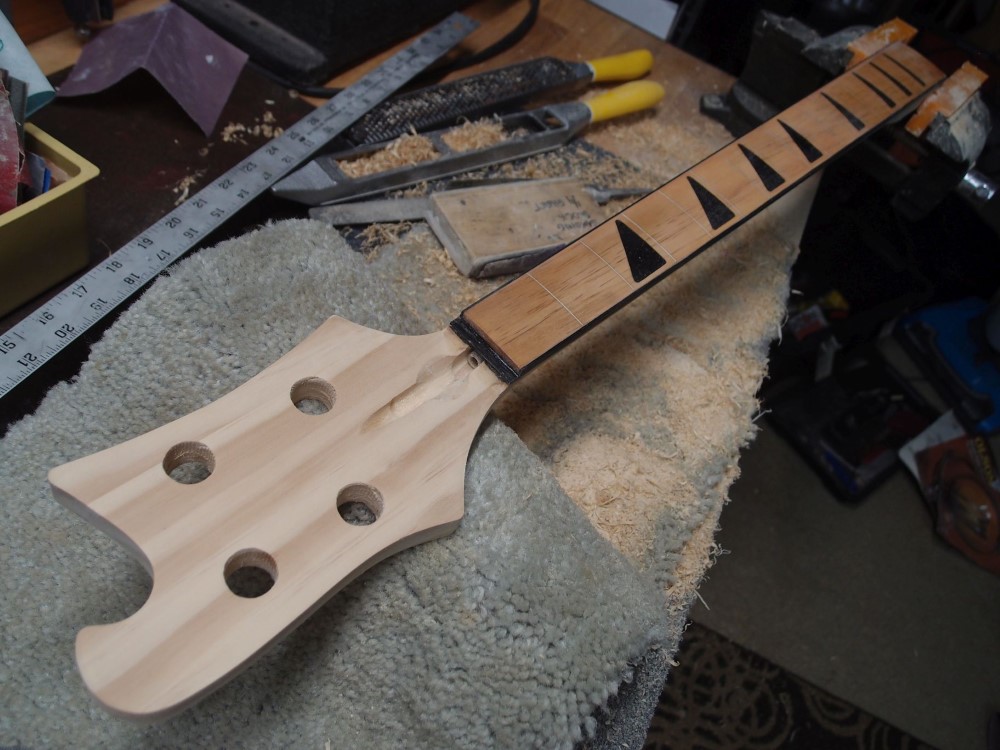April 19, 2019
Bursts Done
April 19, 2019
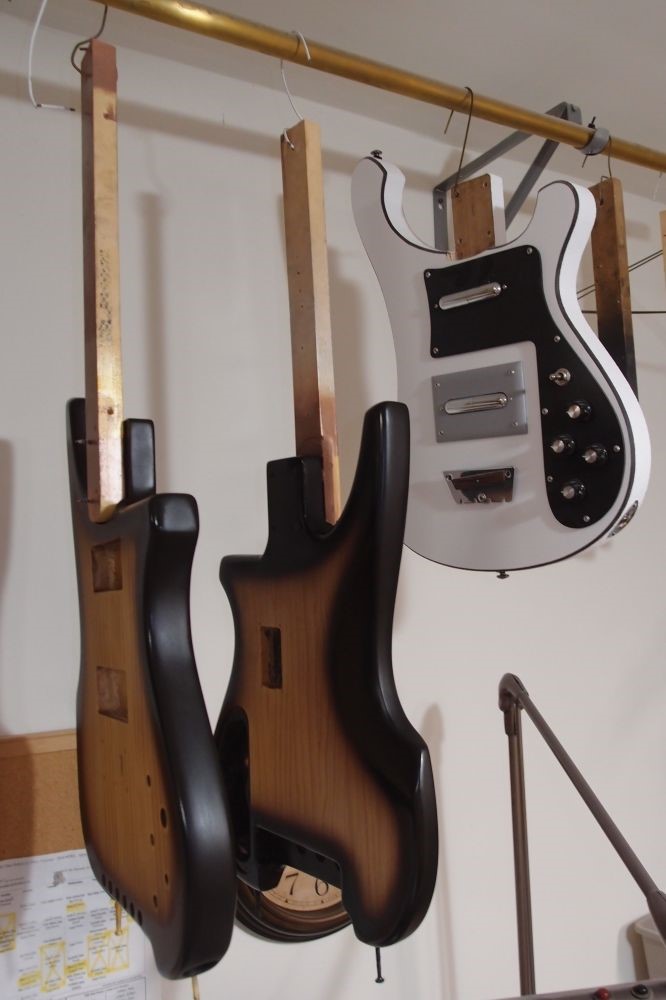
The two Kubicki bodies finally have all the bursted edges done. This is a dark brown, not a black, that looks very nice with the yellow of the pine, as you can see here on the Strato-vox:
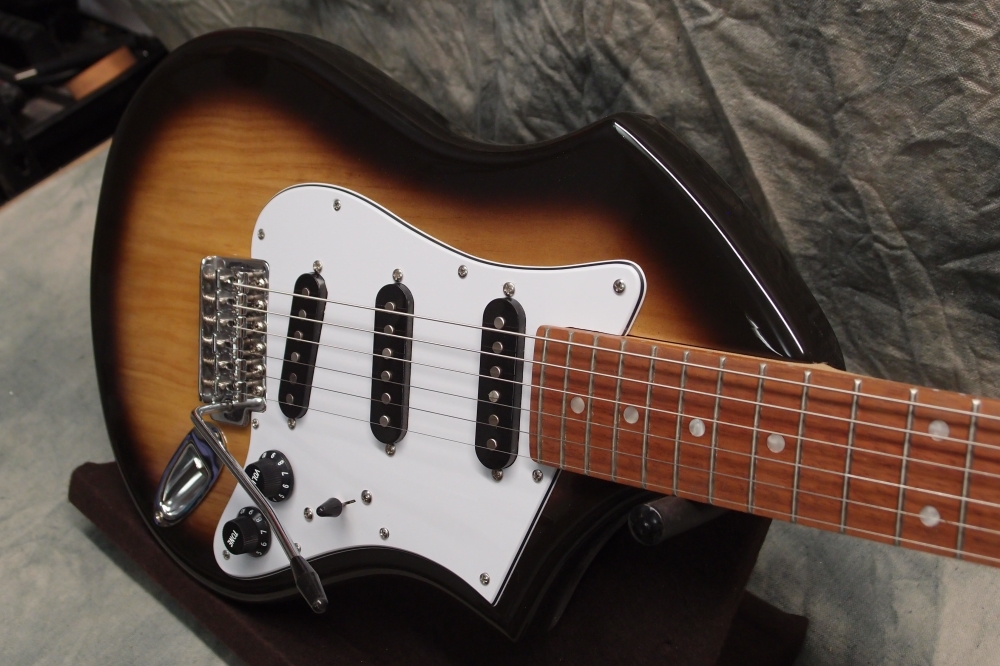
It is important to get a good thick layer on, especially at corners and edges that are prone to bumps and wear. Thin finishes are bullshit. I can say that now that I am no longer being monitored on that giant online waste of space known as Talk*ass. The only reasons for a thin finish are cheapness and the inability to apply a real finish that actually protects the piece.
The whole thin-finish mythos comes from the days of nitrocellulose lacquer, which never dries hard unless applied absolutely thin. Modern finishes like polyurethane are much better, and there is no reason to apply a 'thin finish' anymore.
While on the subject, I must reiterate that this is an oil-based polyurethane. Water-based polyurethane is more like clear house paint. It is not the same chemistry at all, it is nowhere near as tough. As long as oil-based poly is available, use it.
These bodies will hang up for a day or two while I get the Mosrite body ready for clear-coating. Then I'll do all three at once. I got a brand-new quart of Minwax gloss.
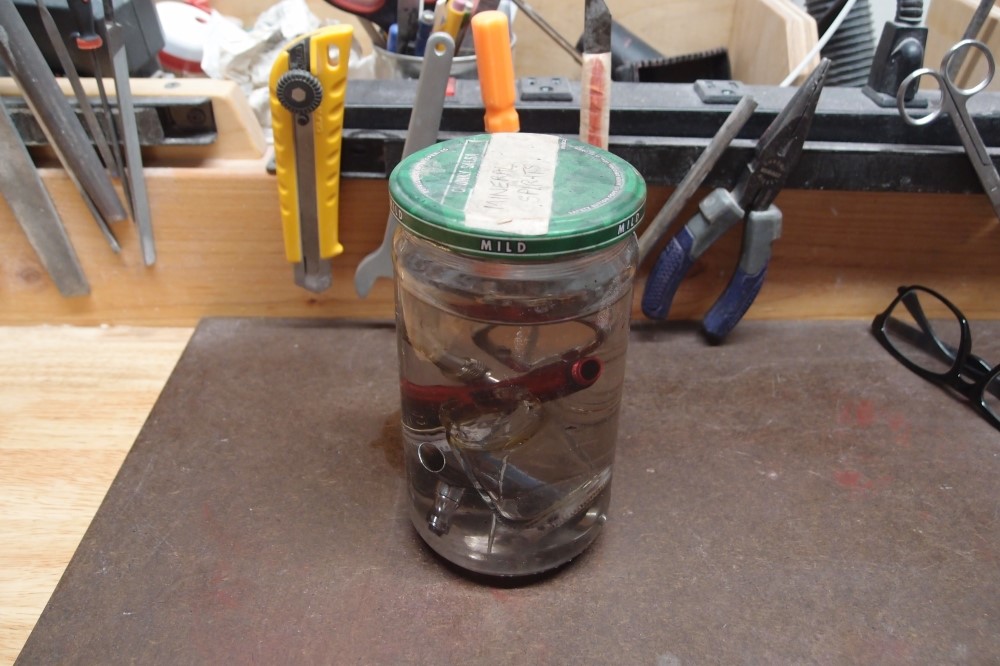
My trusty airbrush has earned its keep again and deserves a good long soak in mineral spirits. The wide-mouthed salsa jar is perfect for such use, although the lid leaks if you tip it over.





